Gedatolisib
Breast cancer mouse xenograft study
An internal mouse xenograft study found that the combination of gedatolisib with palbociclib, a cyclin-dependent kinase 4 and 6 (CDK4/6) inhibitor, and fulvestrant, a selective estrogen receptor degrader, led to durable tumor regressions. Importantly, tumors regressed to minimal volumes within 20 days of triplet therapy, and continued to remain dormant, without further therapy, for up to 90 days.
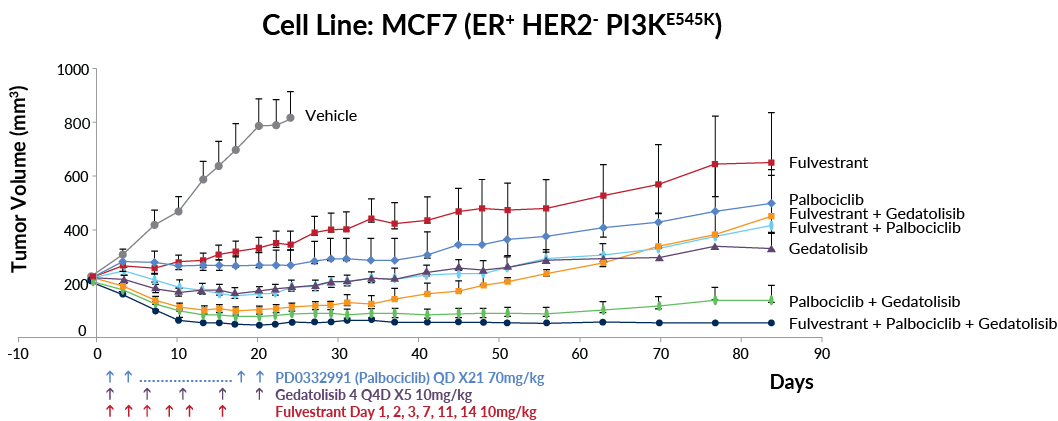
CELsignia
Mouse xenograft studies
Study 1: Anti-HER2 therapies treating abnormal HER2 signaling in HER2-negative xenograft tumor models
- Previous clinical trials have indicated that there is a weak correlation between HER2 expression levels and HER2 targeted therapy benefit. To evaluate whether HER2-negative tumors with abnormal HER2 signaling may respond to anti-HER2 drugs, H2073 and BT483 cell lines were studied in mouse xenograft models.
- H2073, a non-small cell lung cancer cell line, and BT483, a breast cancer cell line, were each found by the CELsignia test to have abnormal HER2 signaling despite having normally expressed, non-amplified HER2.
- In the H2073 xenograft model, mice were dosed daily for 19 days with afatinib, an irreversible EGFR, HER2, HER4 tyrosine kinase inhibitor. In the BT483 xenograft model, mice were dosed daily for 20 days with lapatinib, a reversible EGFR and HER2 tyrosine kinase inhibitor.
- Tumor growth was significantly inhibited by afatinib (95%) and lapatinib (50%) in their respective xenograft models, demonstrating that abnormal HER2-driven signaling in HER2-negative cancers is oncogenic and responsive to treatment with anti-HER2 drugs.
Tumor Growth Inhibition using HER2 inhibitors in HER2-negative xenograft models
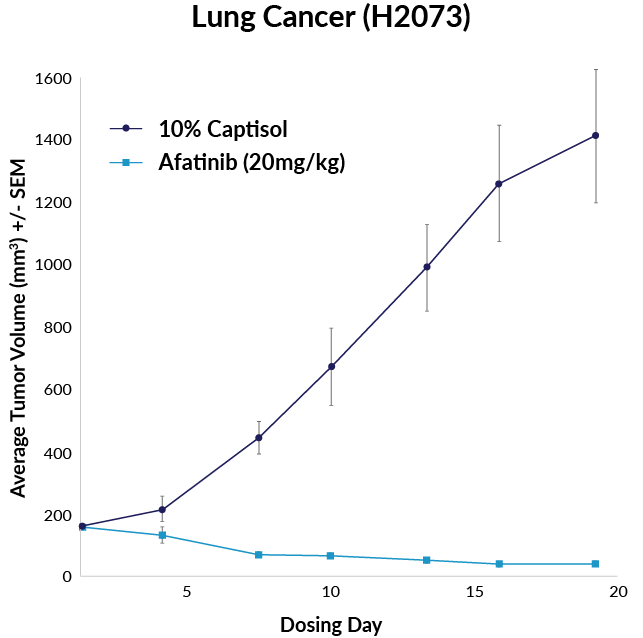
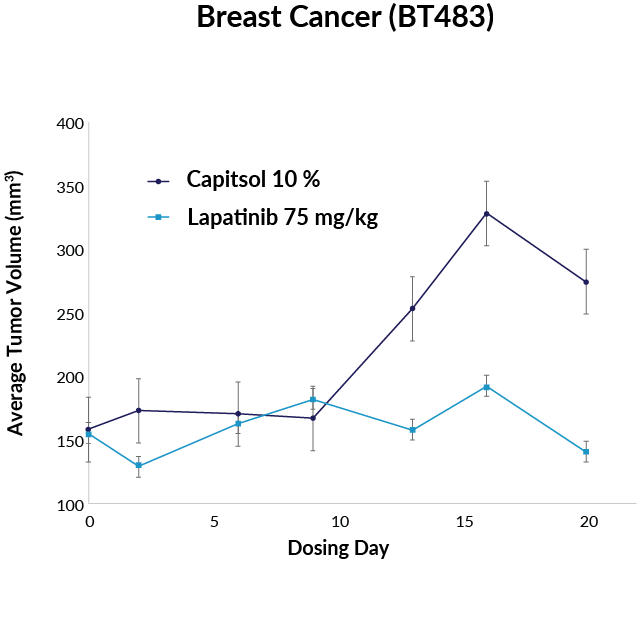
Study 2: Tumor xenograft study vs. CELsignia signaling analysis using c-Met and ErbB targeted therapies
- The HCC1954 breast cancer cell line was found by the CELsignia Test to have abnormal HER2, HER1, and c-Met pathways. The efficacy of different HER family and c-Met as single agents and in combination was also determined ex vivo.
- HCC1954 was then studied in a mouse xenograft model using these same agents to determine the correlation between the ex vivo and in vivo methods of assessing signaling activity and drug efficacy.
- In the xenograft study, mice were dosed daily for 17 days with either a control, neratinib (pan-HER TKI), tepotinib (c-Met TKI), erlotinib (HER1 TKI), erlotinib and tepotinib, or neratinib and tepotinib.
- Each of the mouse xenograft studies yielded results consistent with the results from the ex vivo signaling and drug efficacy analyses performed using the CELsignia Test. Of particular note was the superior tumor growth inhibition of the pan-HER and c-Met inhibitor combination (71%) compared to the EGFR and c-Met inhibitor combination.
| Drug | Signal Inhibition Measured by CELsignia |
Xenograft Tumor Reduction vs. control (t-test) |
|---|---|---|
| Erlotinib (HER1i) | <5% | 5% (p=.870) |
| Tepotinib (c-METi) | <5% | 10% (p=.780) |
| Neratinib (pan-HERi) | 50% | 45% (p=0.003) |
| Erlotinib + Tepotinib | 48% | 47% (p=0.110) |
| Neratinib + Tepotinib | 100% | 71% (p=0.0003) |
Tumor growth inhibition in HER1 and c-Met abnormally signaling xenograft model (HCC1954)
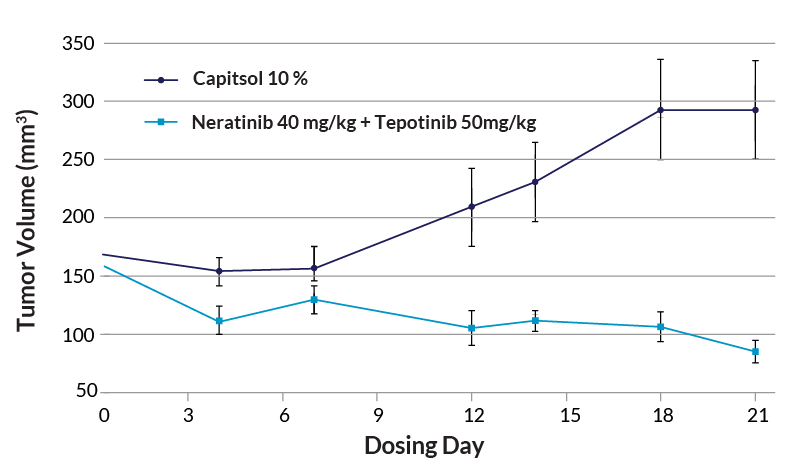
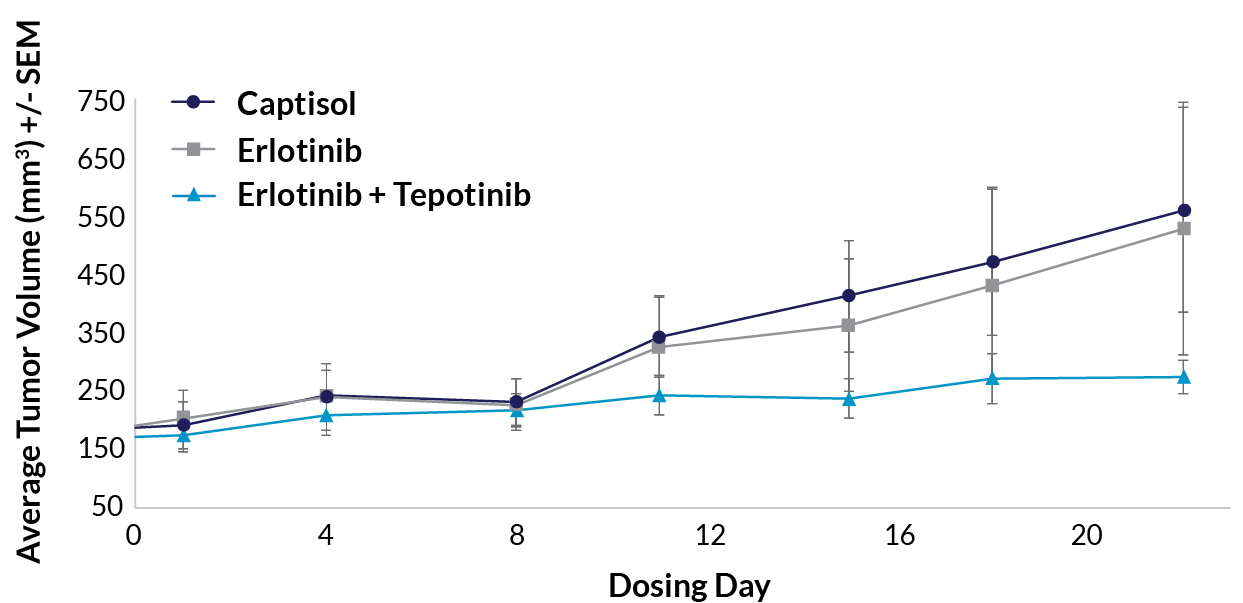
Study 3: Ovarian xenograft tumor model with abnormal HER2 and c-Met signaling treated with pan-HER and c-Met inhibitors
- OVCAR-4, and ovarian cancer cell line, was found by the CELsignia test to have abnormal HER2 and c-Met signaling despite the lack of corresponding EGFR, HER2, HER3 and c-Met mutations.
- OVCAR-4 was the studied in a xenograft mouse model to evaltuate the anti-tumor effect of treatment with a pan-HER inhibitor and c-Met signaling was oncogenic. Mice were dosed daily with neratinib (pan HER TKI) and tepotinib (c-Met TKI) for 16 days.
- The study found that tumor columnes relative to tumor size before treatment were reduced by 40% in the tepotinib + neratinib treated group.
- This is the first report of a normally expressed EGFR, HER2, HER3 and c-Met ovarian tumor xenograft model responding to treatment with pan-HER and c-Met inhibitors, demonstrating the oncogenicity of abnormal HER-family and c-Met signaling.
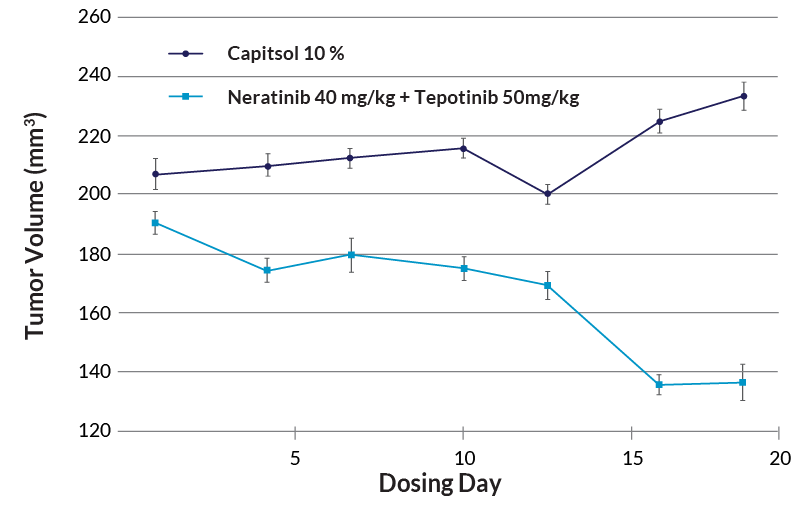
Study 4: Response of a PIK3CA-mutated cell line, insensitive to a PIK3CA inhibitor, to a pan-PI3K inhibitor
- A PI3KCA-mutated cell line, HCC1954, was studied to compare PI3K signaling activity measured by the CELsignia Test and tumor growth inhibition in a xenograft mouse model.
- The CELsignia test found that signaling activity associated with the PI3K-α isoform was normal, despite the presence of PIK3CA mutations. However, the CELsignia Test found that pan-PI3K signaling activity was abnormal.
- The CELsignia signaling results were compared to xenograft study results that evaluated a PI3K-α inhibitor (alpelisib) and a pan-PI3K inhibitor (taselisib).
- A third-party study reported that alpelisib, a PI3K-α inhibitor, had no anti-tumor effect on an HCC1954 xenograft model.
- Celcuity studied a HCC1954 xenograft mouse model using a pan-PI3K inhibitor (taselisib). The Celcuity study found that taselisib induces a significant anti-tumor effect in the HCC1954 tumor (79%).
- PI3K signaling activity measured by the CELsignia Test directly correlated to tumor growth rate inhibition in contrast to the PIK3CA molecular test, which showed no correlation.
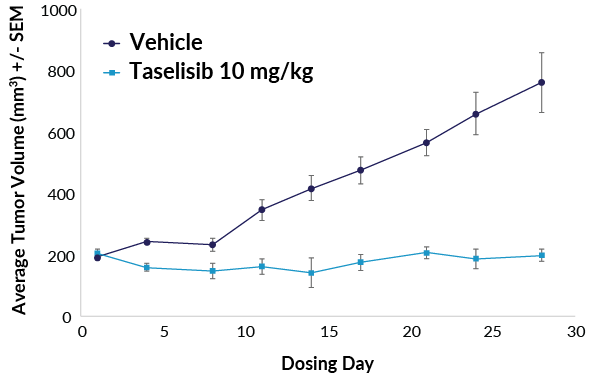
| Pathway Activity Assessed |
CELsignia Score |
Anti-tumor effect of matching drug |
|---|---|---|
| PI3K-a signaling | Normal | No reduction (alpelisib) |
| Pan-PI3K signaling | Abnormal | 79% reduction (taselisib) |